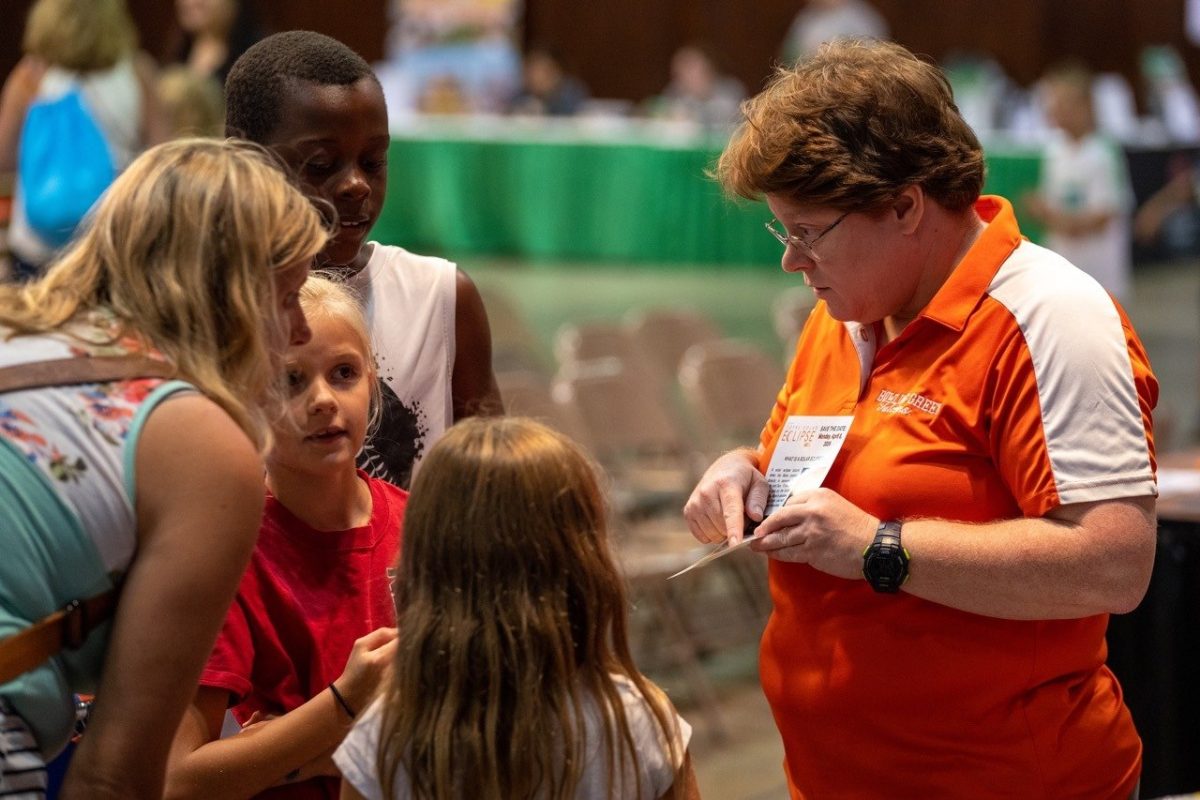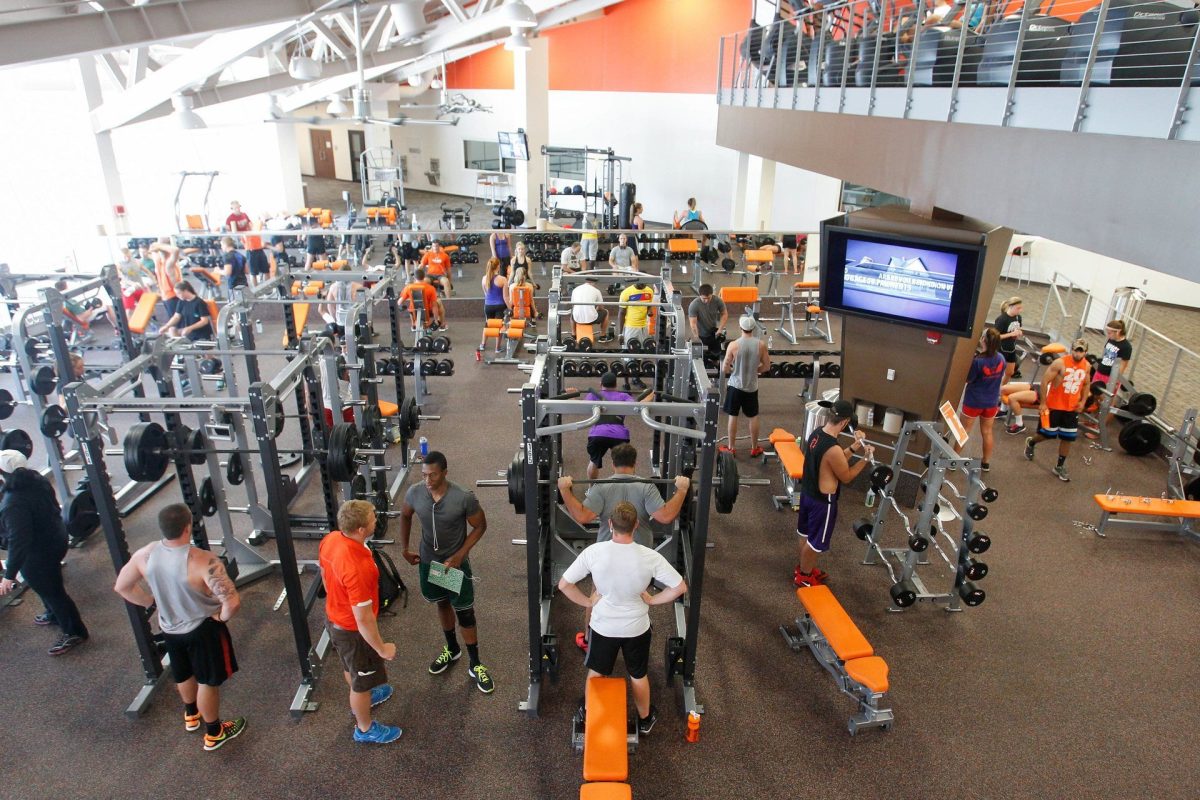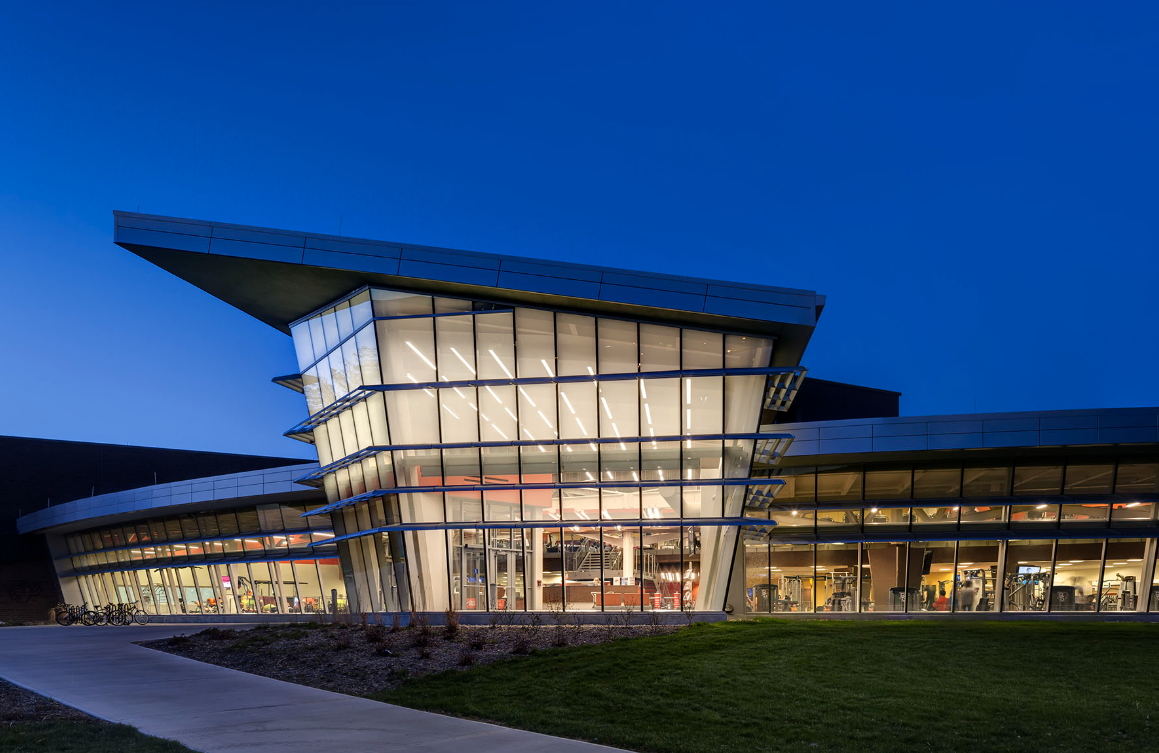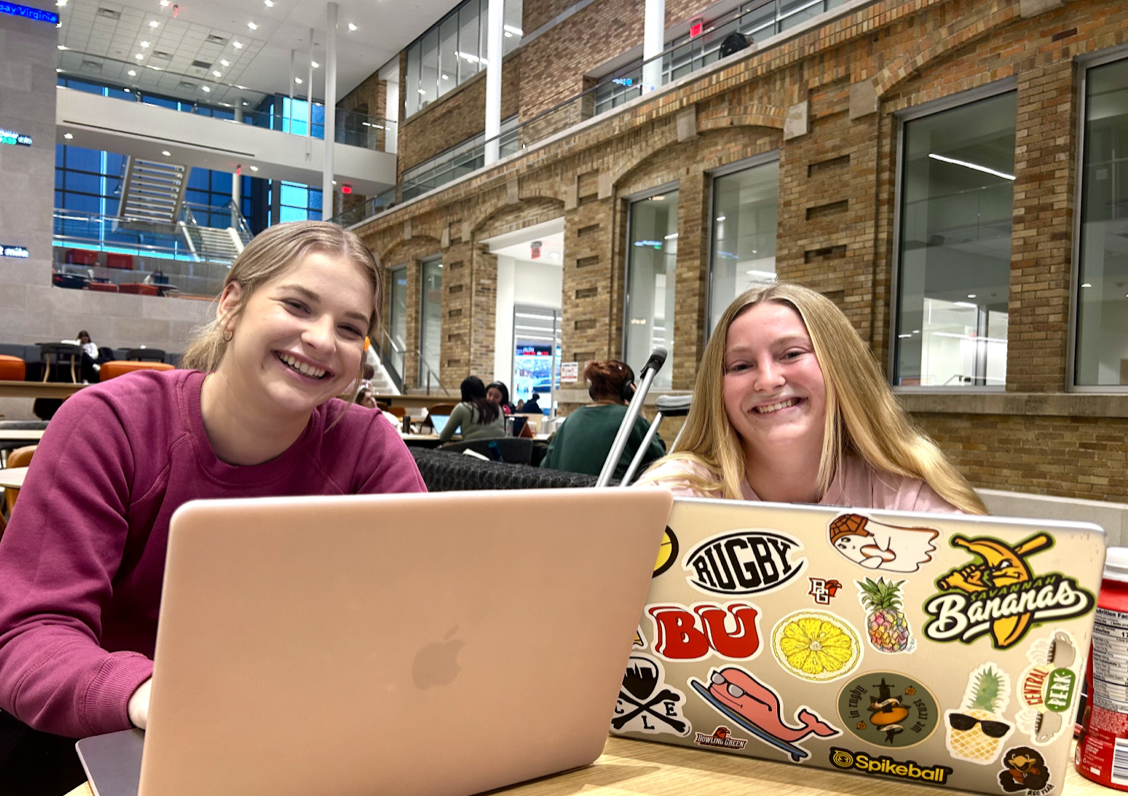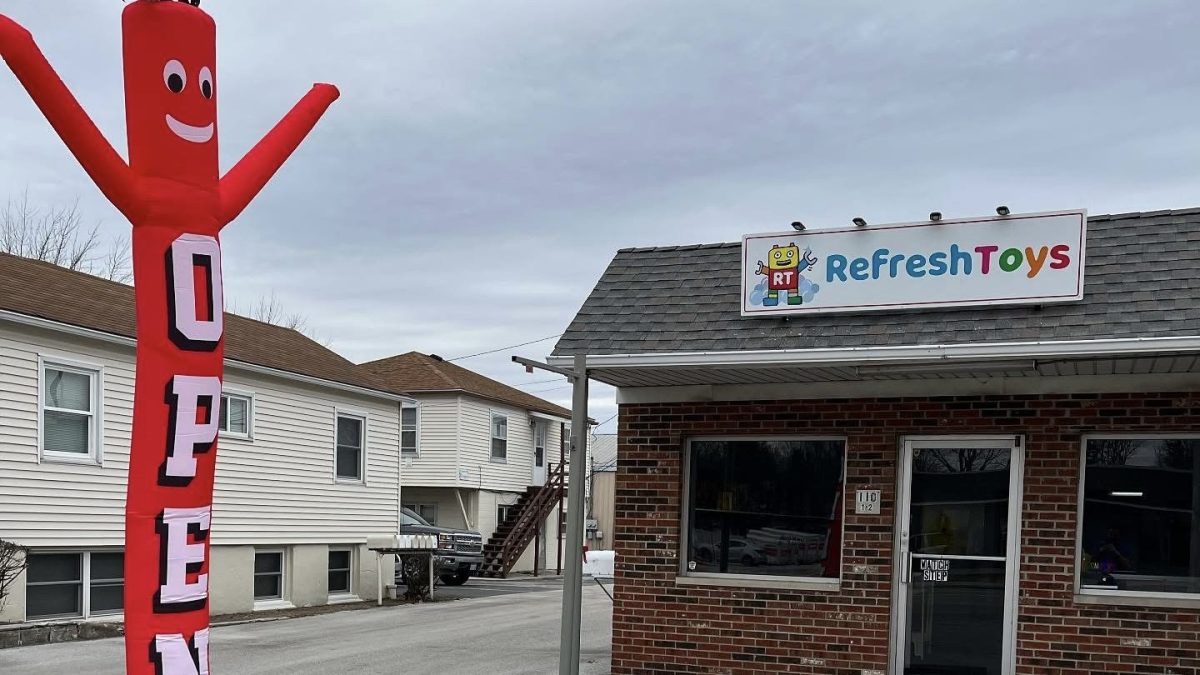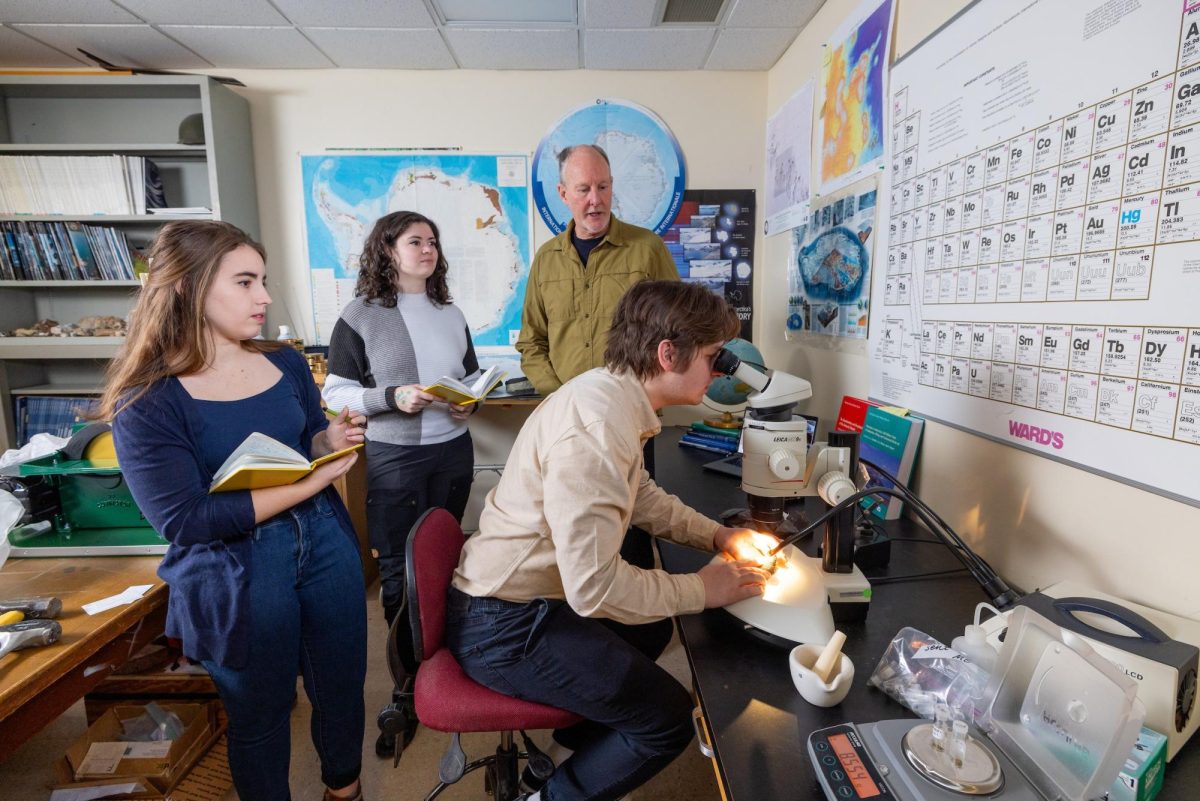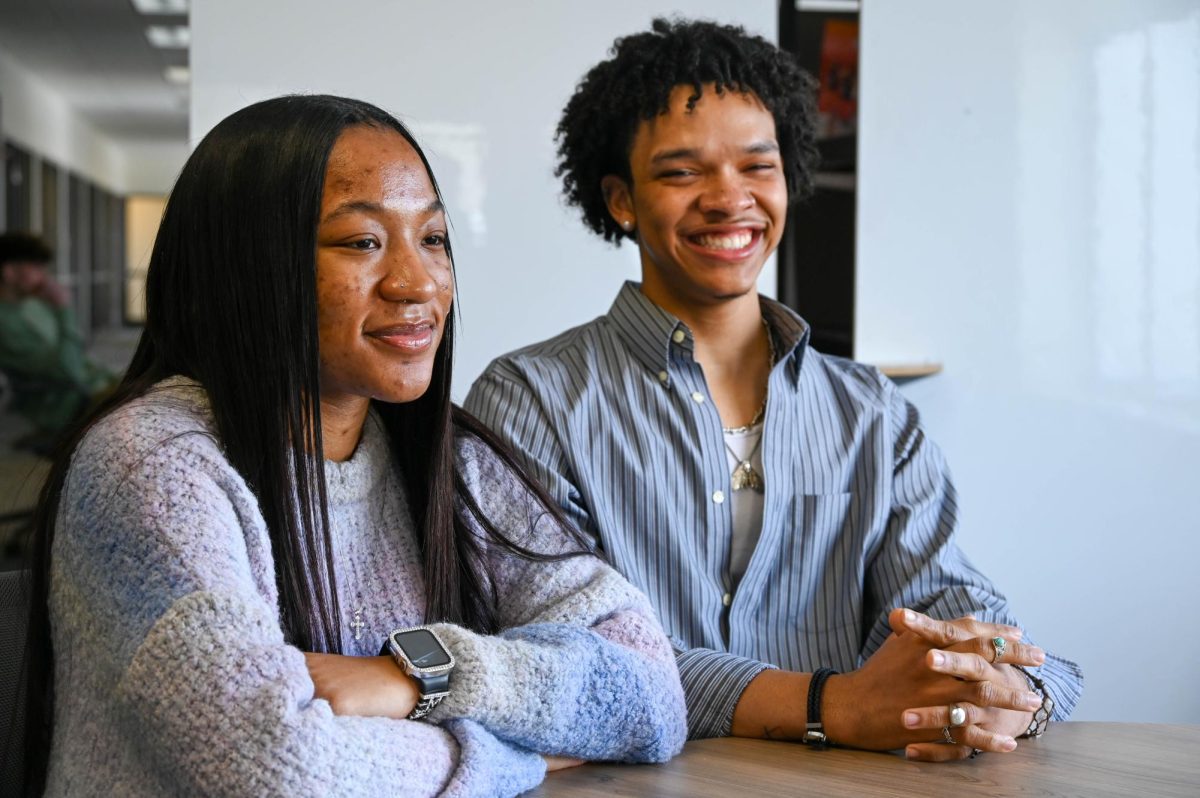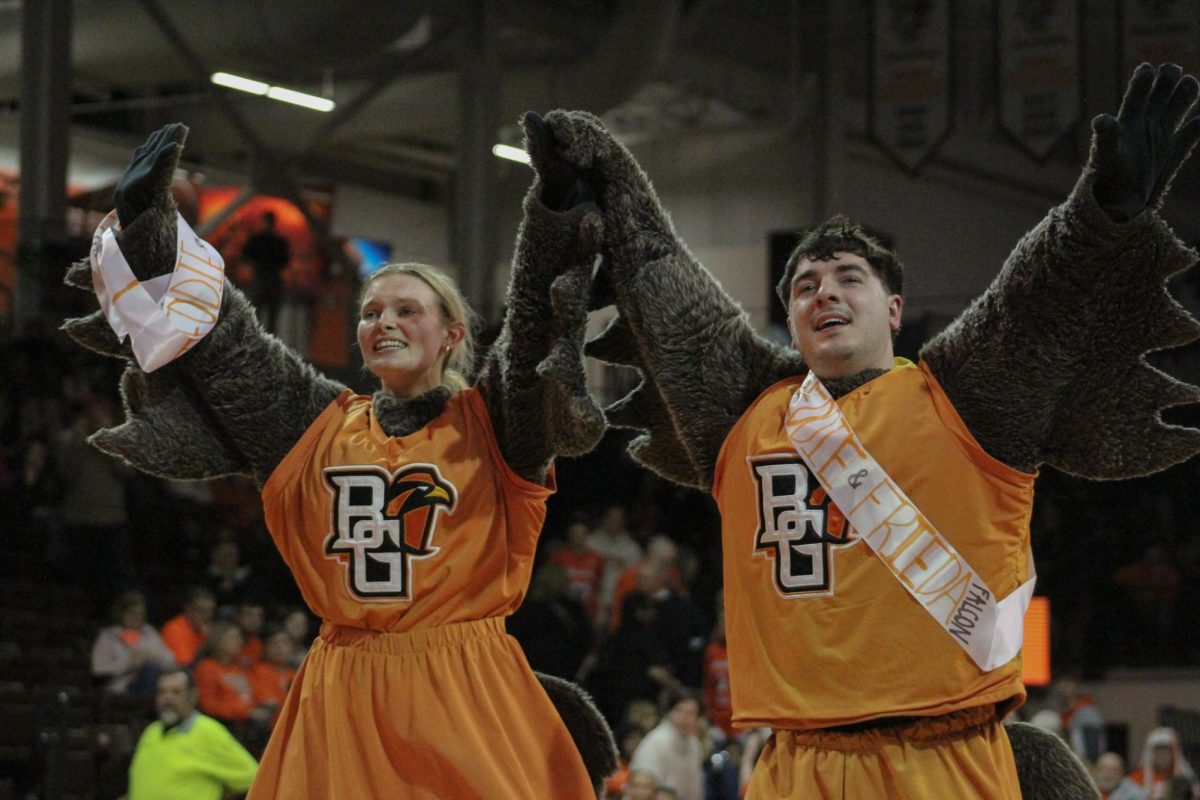Collaboration is the name of the game at one of the University’s newest spaces, the Collab Lab, which will serve as a space for students, faculty and the community to innovatively think, create, collaborate and build.
[[inline_image_identifier 7634259cb1b2b6afdf1bda785f60e868.jpg]]
Half of the 2,000 square feet space was already occupied by the Student Technology Assistance Center, which provided a solid foundation for the lab. The lab is geared towards innovative thinking and problem solving, and centered on design thinking.
“The aim here is to intentionally make a space that is optimized for small group work and creativity,” Jerry Schnepp, director of the Collab Lab, said.
[[inline_image_identifier a77db41b2e6e1a3d25a2d5fa6cba566b.jpg]]
Schnepp visited universities with similar spaces, including the MIT Media Lab and the Harvard I-Lab, as well as industries such as consulting firms.
“What we kept seeing is that it’s not people working on projects with their computers, it’s people standing up and writing on whiteboards and butcher paper. It’s places where you can kind of get messy,” Schnepp said.
The whiteboards are heavy duty glass boards more conducive to writing than ordinary whiteboards. Some of them move around to create a partition feel when desired.
Jenn Stucker, a member of the Collab Lab steering committee and associate professor and chair of the graphic design program, thrives in working in idea spaces such as this one.
“It’s important to clarify how collaboration works,” Stucker said. “Some people think that collaboration is dividing up tasks…that’s more teamwork. Collaboration to me is more of a think tank, think space where people are offering different points of view in the ideation process.”
Though she hasn’t visited idea labs at other universities, she is familiar instead with the idea from time spent in design firms. She noted, for example, a space Hobby Lobby has in their corporate office.
“They have spaces like this…approachable comfortable spaces where you feel like you can just share an idea,” Stucker said.
There are some more traditional spaces including a large work table with chairs and a more private small work room – which is encompassed by glass partial walls that will also serve as dry-erase surfaces.
The lab does have advanced technology, though it is not technology centered.
The tech includes six iMac work stations with Adobe Suite and 3D software, three 3D printers, a 3D scanner, a laser cutter, two virtual reality work stations and laptops.
Interdisciplinary collaboration is a significant goal of the lab, and one the virtual reality technology is geared towards.
“What’s really exciting is getting people from different disciplines together,” Schnepp said. “It’s mostly about collaboration, but there’s also the coolness of new technology.”
Schnepp hopes for the new technology, such as virtual reality and robotic kits, to spark creativity into the users of the Lab.
The universal laser cutter uses Adobe Illustrator and cuts through wood, plastic and metal.
“Between the 3D printers and the laser cutter we can prototype a lot of physical objects,” Schnepp said.
Even with the new technology available, much of the prototyping will be more simplistic, utilizing cardboard, tape, pipe cleaners and the like.
The costs of the 3D printing and materials are included in the operations budget for the Lab, so students and faculty with well thought-out designs will be able to create product prototypes free of charge.
“You can just walk into this space and have an idea and not be related to a class at all and have people that can help you work,” Stucker said. “Hopefully that will change the culture of collaboration.”
The Lab will be equipped with student media specialists who will be stationed to assist with the tech portion of the lab. These media specialists stem from the STAC, and can also help students and faculty with most software programs that may be required for class uses.
[[inline_image_identifier f4c456562bf4052ef59011f9da91b7b9.jpg]]
The media specialists use Macbook Airs that will also be available to individuals using the lab.
Since the Collab Lab encompasses what used to be the STAC, foot traffic into the space will be present, but those who come for what used to be STAC services will be exposed to so much more, too.
“The STAC has evolved into the Collab Lab,” Schnepp said. “We are doing all of the same things the STAC did plus the innovation part…the name STAC doesn’t exist anymore.”
[[inline_image_identifier 2e1da5ca71785f2675f03e1e78dcece9.jpg]]
The Collab Lab is also a skill shaper – students can learn new technologies and the art of the ideation process, including brainstorming and collaboration.
“These are skills that are hard to pick up from reading a textbook, and a lot of employers really emphasize the importance for people to be able to work collaboratively,” Colleen Boff, associate dean of the libraries, said in a Collab Lab interview last September.
In addition to normal foot traffic, Stucker and Schnepp have been reaching out across the University to spread the word about the new Lab.
“I’ve been talking to people about it for over a year,” Schnepp said. “I’ve been leading workshops, promoting workshops, co-facilitating workshops under the brand of the Collab Lab to not only spread the word but because I’m itching to get people to collaborate.”
Schnepp and Stucker are not the only people with collaboration on their minds; one of the University’s goals is emphasis on collaborative work and innovation. Last August, President Mary Ellen Mazey’s State of the University address was themed “collaboration and transformation.”
Funding for the Collab Lab came in part through the Entrepreneurial Services Provider grant from the state of Ohio, which funds “technology-based entrepreneurial outcomes” in Ohio, according to ohio.gov’s website.
The Collab Lab is open and ready for students during the first week of classes.
“I believe in the idea of collaboration,” Stucker said. “I see an opportunity here to make something grow with this Collab Lab.”


